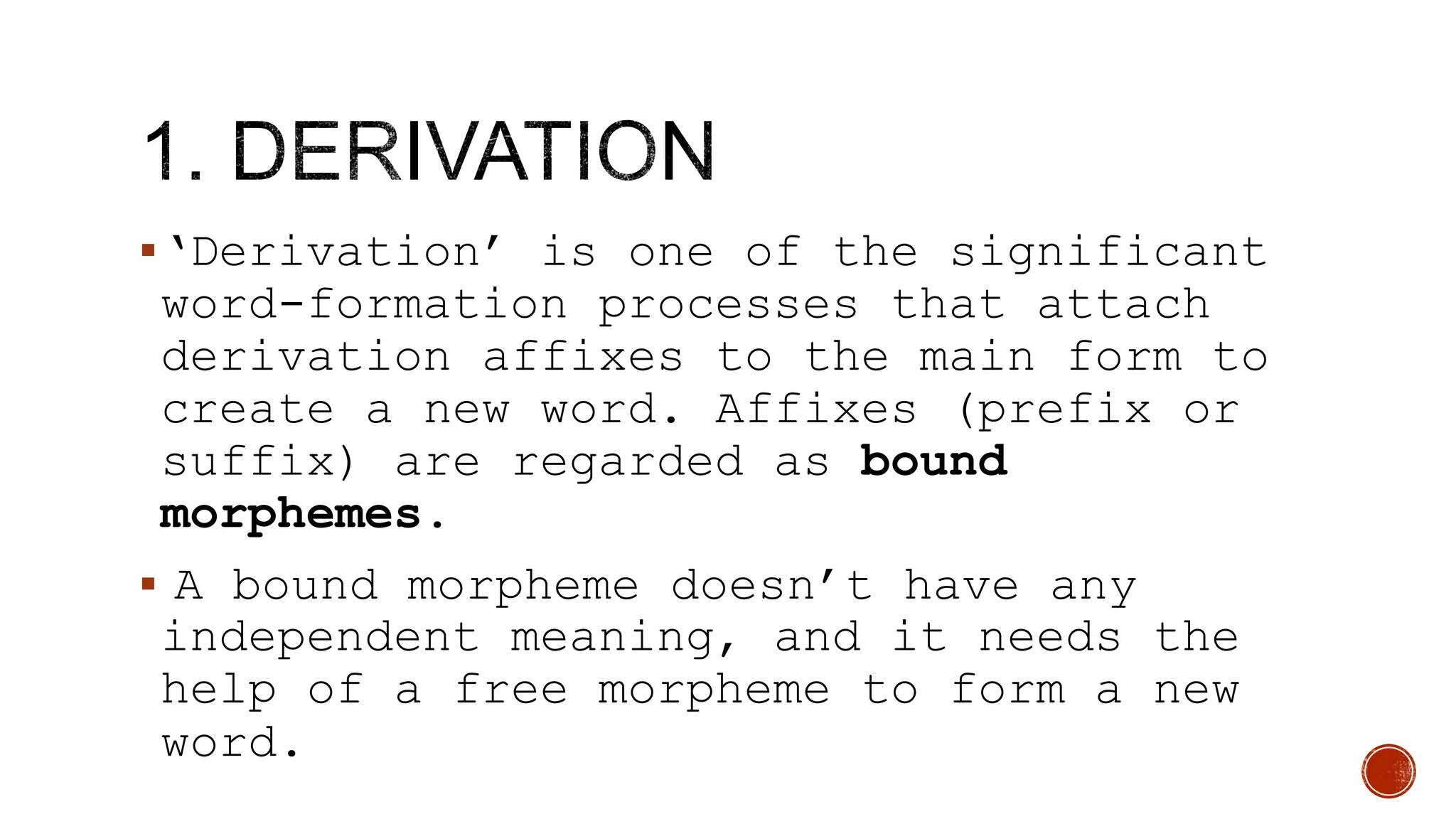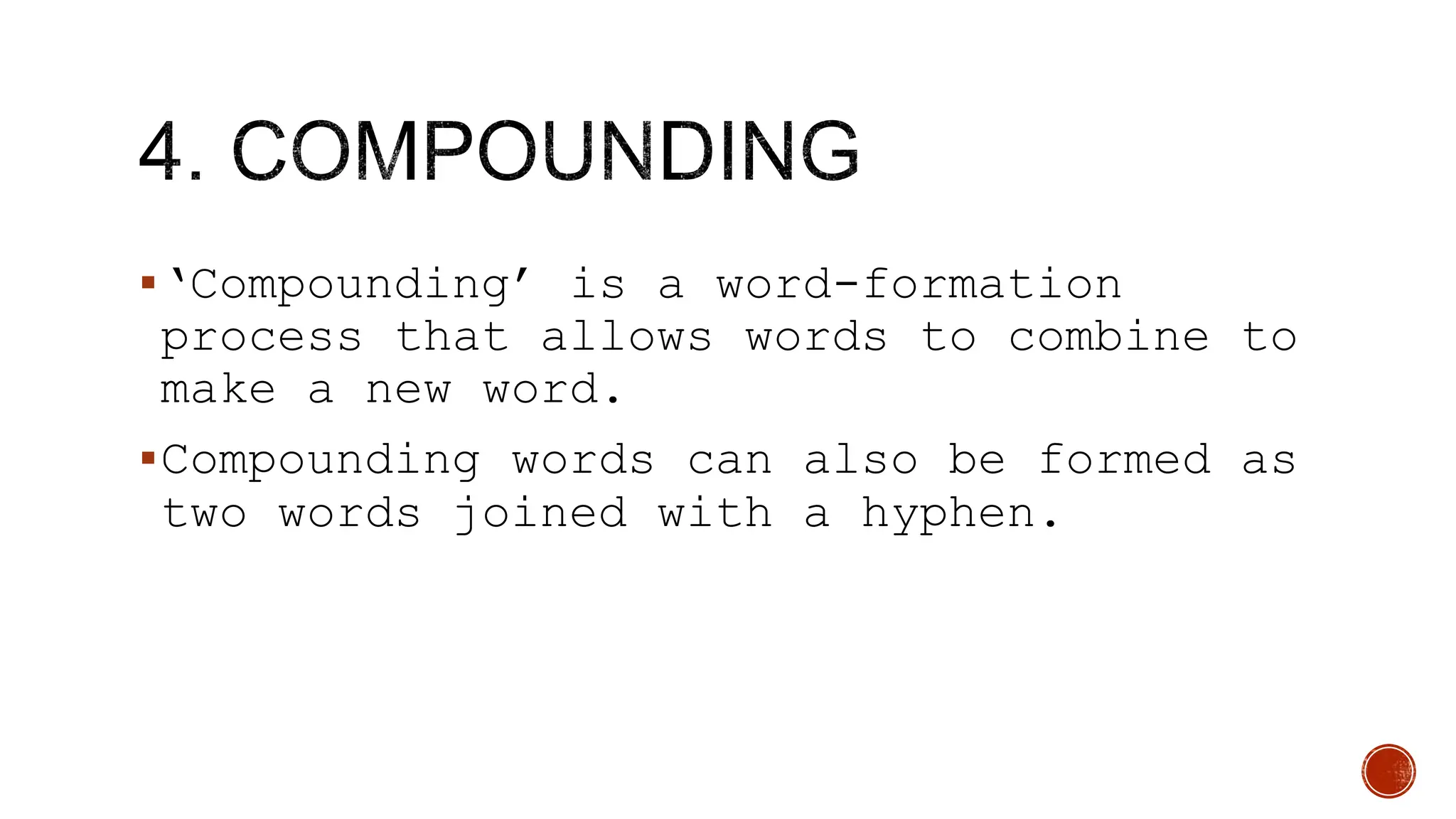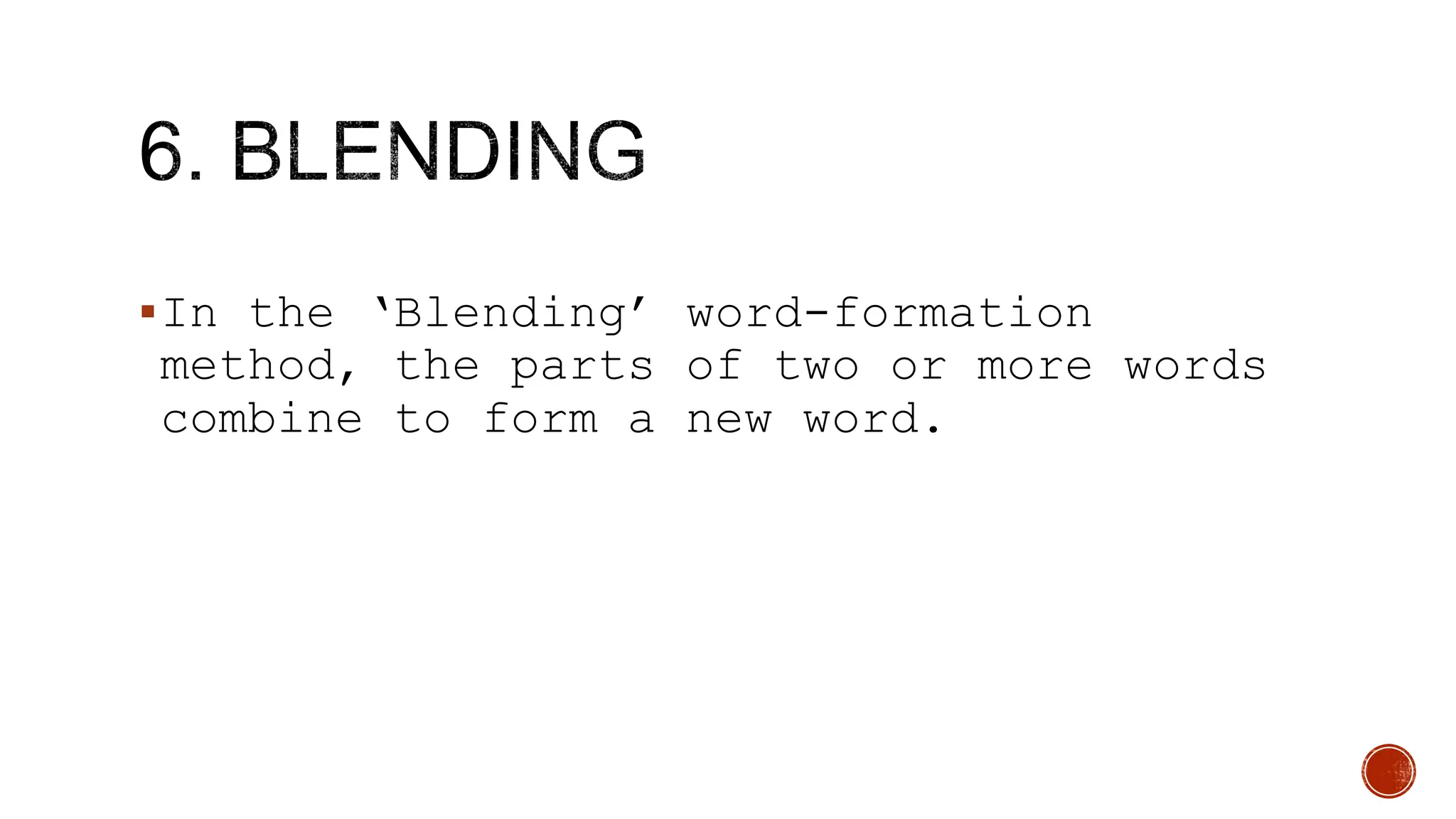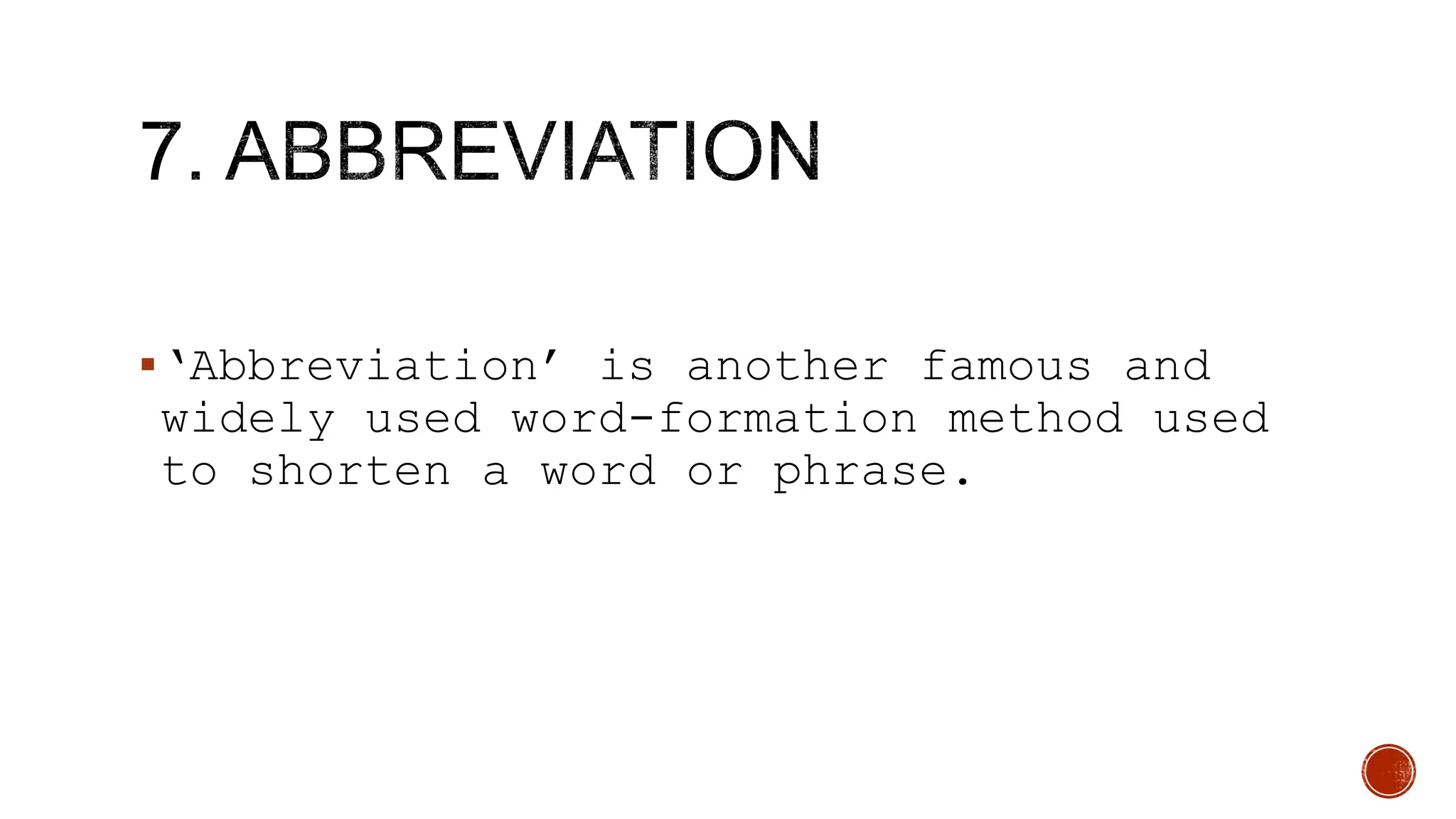The document discusses the various word formation processes used to expand vocabulary and communicate smoothly. It describes 9 main processes: derivation, back-formation, conversion, compounding, clipping, blending, abbreviation, acronyms, and borrowing. Derivation adds affixes to base words to create new words, while back-formation removes affixes. Conversion changes a word's grammatical class without changing form. Compounding combines words, and clipping shortens words. Blending combines parts of multiple words. Abbreviation and acronyms shorten words or phrases. Borrowing adopts words from other languages. Mastering these processes helps effectively form new words.























